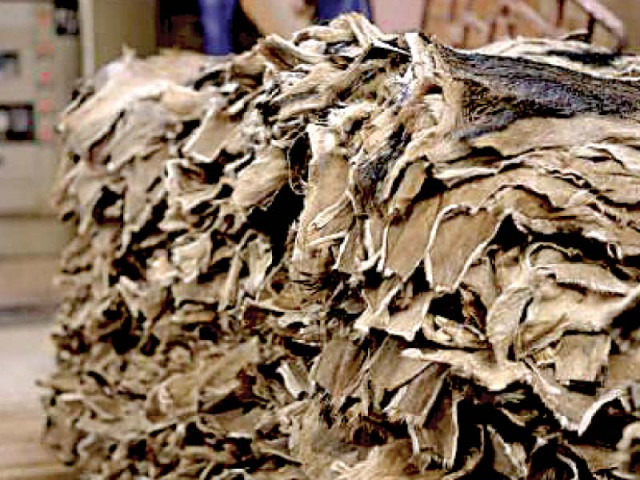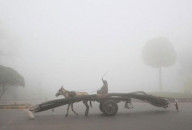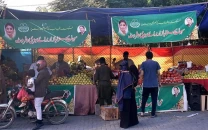Leather market feels the pinch
Increase in collective sacrifice has led to fewer livestock skins being collected

For leather producers, Eidul Azha has always been a profitable period— but not this year. In Lahore, which is considered as the largest leather market, the producers struggled to get their hands on raw material.
The flow of animal skins and hides, one producer said, was being controlled by charitable organisations. “A pandemic-induced financial crisis has resulted in the public’s increased inclination towards collective sacrifice,” he said.
Experts claim that one of the reasons for the low accumulation of skins, apart from low rate of sacrifice, in the leather market is that large charities have set up separate warehouses to process and save sacrificial skins therefore they are not accounted for by the market.
This has led to sources from the Tannery Association calculating a loss between Rs 1.5 to 2 billion aided by improper collection arrangements and what is viewed by the association as the hoarding of sacrificial skins by charitable organisations and NGOs.
While leather producers blame charitable organisations for controlling the flow of raw material, Al-Khidmat Foundation’s Mughis Qureshi outrightly rejected the allegations.
Talking to The Express Tribune, Qureshi, who serves as the foundation’s executive director said: “Sacrificial skins donated by citizens are very important to us as they are the backbone of the charitable economy.”
Read The boom of cattle-related businesses
Interesting to note is that rising inflation has had no impact on the prices of sacrificial livestock skins as they have remained low and unchanged for the past two years.
In the Lahore leather market cow and bull skins are purchased for Rs. 1,000 to 1,200, goat skins for Rs. 150 to 180, sheep skins for Rs. 100 to 115, and camel skins for Rs. 500 to Rs. 550.
Muhammad Tayyab, Chairperson of the Pakistan Tannery Association, informed The Express Tribune that the collection of skins has not been as enthusiastic as in the past due to the low prices offered. “In most areas people just opt to donate sacrificial skins to local seminaries,” he said.
However, charitable organizations have not been affected by these measly rates. “Of course, their [skins] prices have come down over the last few years, but because we do all the processing ourselves and sell the skins after saving, we get 7 to 10 percent more profit than the normal market,” Qureshi explained. “The middleman loses his role since we do the processing so the money that was supposed to go to him, we save that money and instead spend it on welfare work,” he added.
Not all charitable organisations, however, make a profit. Director of Minhaj Welfare Foundation, Syed Amjad Shah, talking to The Express Tribune seconded the fact that the selling price of the skin of sacrificial animals is very low. He further added that their selling cost is equal to the cost of protecting and caring for the skins so there was not much of a profit.
Regardless of profit or no profit, Tayyab was of the view that even though the skins collected by various NGOs were detrimental to the middleman, the tannery sector did not care because in the end, the skins end up with them as no NGO or charitable organisation has its own production unit where they could use the skins.
Published in The Express Tribune, July 28th, 2021.



















COMMENTS
Comments are moderated and generally will be posted if they are on-topic and not abusive.
For more information, please see our Comments FAQ